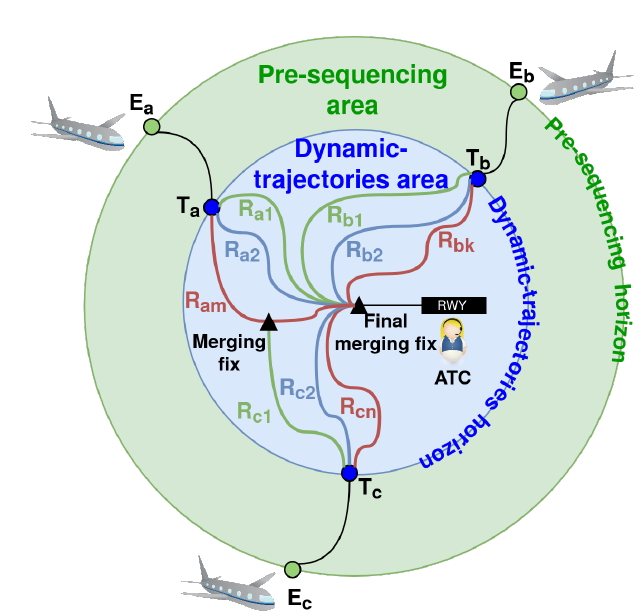Raúl Sáez García defends his thesis on air traffic management
Oct 03, 2021
Raúl Sáez García defended his thesis directed by Xavier Prats i Menéndez on October 1, 2021 at the Baix Llobregat Campus. Titled "Traffic Synchronization with Controlled Time of Arrival for Cost-Efficient Trajectories in High-Density Terminal Airspace", the thesis proposes a series of methods and concepts of operations with the aim of improving the efficiency of air operations in airspace terminal.
The growth in air traffic has led to a continuously growing environmental sensitivity in aviation, encouraging the research into methods for achieving a greener air transportation. In this context, continuous descent operations (CDOs) allow aircraft to follow an optimum flight path that delivers major environmental and economic benefits, giving as a result engine-idle descents from the cruise altitude to right before landing that reduce fuel consumption, pollutant emissions and noise nuisance.
However, this type of operations suffers from a well-known drawback: the loss of predictability from the air traffic control (ATC) point of view in terms of overfly times at the different waypoints of the route. In consequence, ATC requires large separation buffers, thus reducing the capacity of the airport. Previous works investigating this issue showed that the ability to meet a controlled time of arrival (CTA) at a metering fix could enable CDOs while simultaneously maintaining airport throughput. In this context, more research is needed focusing on how modern arrival managers (AMANs)—and extended arrival managers (E-AMANs)—could provide support to select the appropriate CTA. ATC would be in charge to provide the CTA to the pilot, who would then use four-dimensional (4D) flight management system (FMS) trajectory management capabilities to satisfy it.
A key transformation to achieve a more efficient aircraft scheduling is the use of new air traffic management (ATM) paradigms, such as the trajectory based operations (TBO) concept. This concept aims at completely removing open-loop vectoring and strategic constraints on the trajectories by efficiently implementing a 4D trajectory negotiation process to synchronize airborne and ground equipment with the aim of maximizing both flight efficiency and throughput. The main objective of this PhD thesis is to develop methods to efficiently schedule arrival aircraft in terminal airspace, together with concepts of operations compliant with the TBO concept. The simulated arrival trajectories generated for all the experiments conducted in this PhD thesis, to the maximum possible extent, are considered to be energy-neutral CDOs, seeking to reduce the overall environmental impact of aircraft operations in the ATM system.
Ultimately, the objective of this PhD is to achieve a more efficient arrival management of traffic, in which higher levels of predictability and similar levels of capacity are achieved, while the safety of the operations is kept. The designed experiments consider a TBO environment, involving a high synchronization between all the involved actors of the ATM system. Higher levels of automation and information sharing are expected, together with a modernization of both current ATC ground-support tools and aircraft FMSs to comply with the new TBO paradigm.

Share: